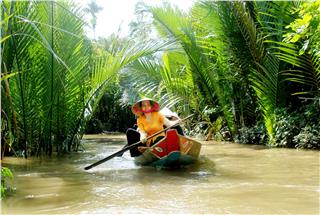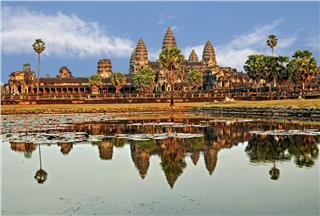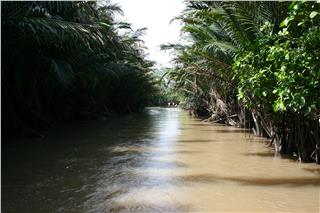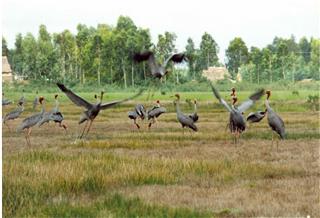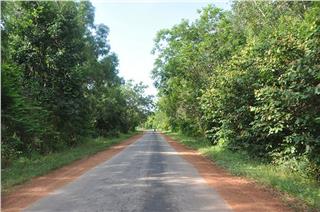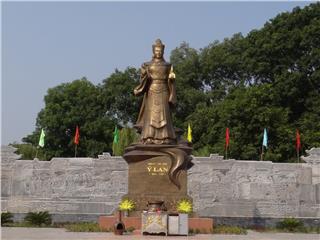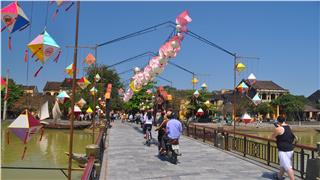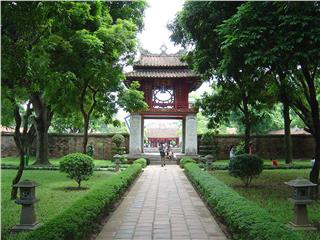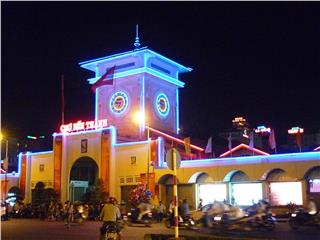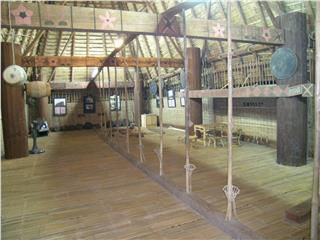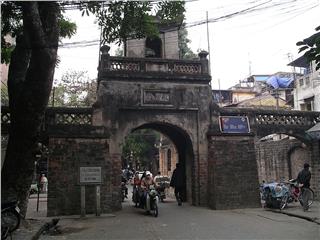Some features of Khmer architecture in Xvayton pagoda
Fri, 13 Mar 2015 . Last updated Thu, 25 Jun 2015 09:02
-
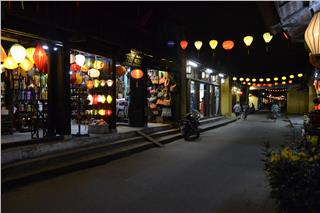 Hoi An travel to New Moon Festival 7231 viewed
Hoi An travel to New Moon Festival 7231 viewed -
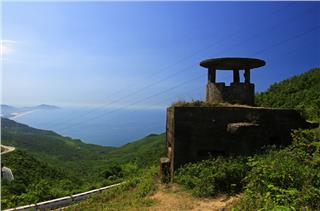 Vietnam War bunker near Da Nang 6705 viewed
Vietnam War bunker near Da Nang 6705 viewed -
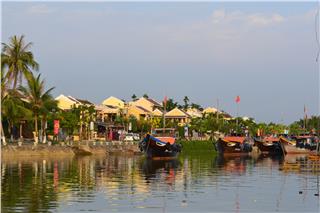 Ancientness of Hoi An ancient town 6618 viewed
Ancientness of Hoi An ancient town 6618 viewed -
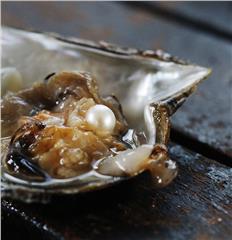 Discovering pearl in Phu Quoc Island 6123 viewed
Discovering pearl in Phu Quoc Island 6123 viewed -
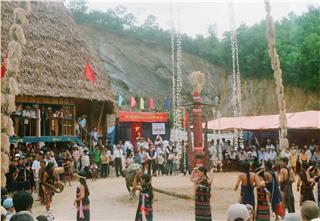 Discovering the Co Tu village in Quang Nam 5980 viewed
Discovering the Co Tu village in Quang Nam 5980 viewed -
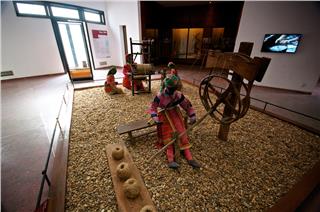 Cultural identity of ethnic groups in Vietnam Museum of Ethnology 5941 viewed
Cultural identity of ethnic groups in Vietnam Museum of Ethnology 5941 viewed -
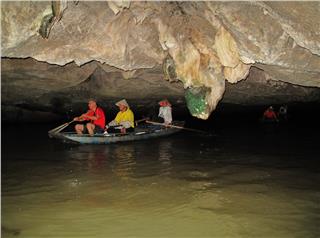 Visit Trang An complex in Ninh Binh 5844 viewed
Visit Trang An complex in Ninh Binh 5844 viewed -
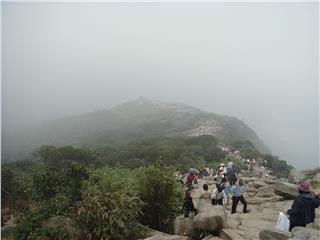 Yen Tu Pagoda and records of Vietnam 5813 viewed
Yen Tu Pagoda and records of Vietnam 5813 viewed -
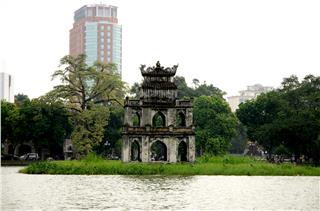 Hanoi Vietnam to Hoan Kiem Lake 5684 viewed
Hanoi Vietnam to Hoan Kiem Lake 5684 viewed
An Giang is famous for not only mountains and rivers, legendary That Son mountain but also the unique architecture of pagodas. Among them, Xvayton pagoda with its unique and mysterious beauty has appealed tourists when visiting to Mekong delta.
Khmer ethnic group has lived in the Mekong Delta provinces like Soc Trang, Tra Vinh, Bac Lieu, Ca Mau, Kien Giang, An Giang for a long time. The group has its own speaking and writing languages and a developed culture revealed clearly in the architecture of the pagodas and towers in the South. Pagodas are the center for religious, cultural and spiritual activities of the community so they look really solemn with impressive curved roofs, pointed rooftop and towers.
As pagodas are so important in Khmer people’s spiritual life, they spare no effort to make them the center of their hamlets. Each pagoda here has all the essence of Khmer architecture and painting in the Southwest. Xvayton pagoda is built in a large area in the center of Tri Ton district, An Giang province. It is typical of the architecture of Khmer people in the South. According to some old Khmer people in the area, Xvayton pagoda, so-called Xa Ton pagoda, was built more than 200 years ago.
Gradually, people called the pagoda with an easier-to-say name: Xa Ton. At first, it was simply made of wood and covered with leaves on a low foundation. I 1896, the people living in the pagoda and the surrounding area dug a pond in its front create a higher foundation. Then they made it a stable pagoda as you can see today. Xa Ton pagoda has the same structure and architecture as other pagodas of Khmer people in the Mekong River Delta.
Its gate and walls look brightly yellow with many patterns typical of Khmer people’s religion and arts such as Buddha statues, leaves and flowers. Architectural clusters stretch from the gate and look really attractive. There is a quiet large pond in the area. Trees reflect themselves in the pond, making the scenery more poetic and peaceful. Ancient trees and imposing towers enhance the beauty of the pagoda. In these towers, bone-ash of the dead is kept. The scale of the towers depends o the families’ status in society and financial conditions.
For Khmer people, this world is for them to live temporarily. They can be satisfied after death. That is why Khmer people often burn the dead bodies and bring them to a pagoda for worshipping. They wish the dead to be protected by Buddha. It can be said that a pagoda is a bridge between the real world and the religious world, and the place for the deceased to rest in peace. This is a special feature of the Khmer pagodas in the South.
The tower pedestals come in different shapes. And their bodies gradually get smaller to the top. Their surface is smooth or has some patterns. Most of the uppermost parts of the bodies are decorated with images of four-faced Buddha or Brahma wearing a pointed hat. Southern Khmer people’s culture is influenced by Brahmanism. Therefore, images of the four-faced Brahma are of great significance. Brahma is a creative and powerful god, who is also the father of gods and human beings.
The main hall is the most significant component of Xa Ton pagoda. The place, where Buddha is worshipped, is the most sacred place and has the most typical architectural features. The hall is located in the center of the area to the East west. It lies on a high foundation because it is considered the heart of the universe, where the essence of heaven and earth is found. The main hall looks impressive with sloping roofs divided in different layers.
The roofs are covered with enameled tiles in yellow or red embellished with green. The tiles look like dragon scales shining in the sunlight. Khmer people decorate the roofs and the corners of the pagoda with statues of Naga sacred snake, which plays a significant role in Khmer people’s spiritual life. The main hall of Xa Ton pagoda is used for grand events, including preaching sessions. Normally, the main hall is simply and solemnly decorated. Khmer people have their own way to display images of Buddha.
The highest statue in the middle is of an enlightened Buddha. It is the biggest one on the altar. The foundation of the statue is in the shape of a big lotus with many layers of petals, which symbolize the nobility of Buddhism, the purity of Buddha and the progress of Buddhism. The foundation is carefully decorated with bas-reliefs in shapes of a lotus flower, bodhi leaf, rice ear and in different colors.
On the lotus foundation, Buddha sits cross-legged showing his supernatural intelligence, power and eternality. The main hall, like the statues in the pagodas, faces East. To explain this, Khmer people say that the East is the most sacred direction in the 100,000 incarnations of Buddha. It drives the dark away and brings light to human beings and all living beings. Under the statue, there are some smaller Buddha statues made of different materials. Obviously, the statues are made in a way that best shows the sacredness of Buddha. The statues look strong and light. Their facial expressions show typical features of Khmer people’s spirit.
The ceiling and the four walls of the main hall are covered with pictures about Buddha’s life. Activities of Buddha and other related figures in his past and current lives are depicted vividly on the walls and the ceiling. The Buddha is depicted in different postures: sitting, standing or lying. Each posture symbolized a period of life from the time before he became a Buddhist monk to the time he was a monk and the time when he entered Nirvana.
Besides, many motifs of Brahmanism and folk beliefs are a limitless source of inspiration in the architecture of the pagoda. This can be seen through the statues of sacred deities and animals. Patterns of flowers and leaves, simple, sophisticated and subtle, are proof of Khmer people’s talent. The second most important component of the pagoda is Sala house, or ceremonial house. Sala was the first house to be built in the pagoda. It is a space for worship of Buddha and also accommodation of the monks and the bonzes. The center of the house has an altar for worship of Buddha but it is much simpler that that in the main hall. Sala house faces East as well.
Noticeably, Xa Ton pagoda still keeps may volumes of holy books written on Corypha lecomtei becc leaves. One of the volumes is still intact with clear and readable handwriting through it is more than 100 years old. Corypha lecomtei becc leaves are long and small. Earlier, they could be found in some Southern areas. Now they are found in some Cambodian provinces only. People took the leaves home, cut and dried them and wrote on them using iron pens. Then they dipped cloth in a mixture of ground cool and oil and rubbed it on the leaves to reveal the handwriting. The holy books are covered in a piece of cloth and kept in a dry place. They will be opened in significant events such as Sima Consecration Ceremony, Buddha’s birthday, frock offering ceremony or Sompia preas khe.
With the development of technology, Buddhist books now can be printed in different ways and different materials. However, for Khmer people in the South, the set of holy books written on Corypha lecomtei becc is always an invaluable treasure containing sacred spiritual meaning in Khmer people’s life. Xa Ton and other pagodas of Khmer people are artworks combining architectural, painting and decoration features. And it is also the place where spiritual, religious and cultural values are kept.
In Khmer culture, young men of any social class practice as monks to become people of dignity and morality. The duration of the process is optional. The practice as monks to learn Khmer language and reveal their gratitude towards their parents. When a young man becomes a monk, he is a member of the Three Refuges: Buddha, Dharma and Sangha and called “luc”. On the 15th day of the lunar month, the man’s parents, sisters or brothers have to bring food to him.
When meeting “luc”, his parents have to salute him. For many people, this action shows their respect for Buddha. In the morning, the monks often go out to ask for food for lunch. They get dressed and wal barefoot in a line without talking or joking to each other. Local people also reserve part of their daily food and bring it to the monks to show their respect.
Khmer people have their own spoken and written language. However, for many objective reasons, the language is just handed down among monks. This places the language at risk of oblivion. Therefore, most Khmer pagoas like Xa Ton hold Khmer classes for Khmer children. The monks teach the children free of charge to improve their knowledge and master their mother tongue. Therefore, the monks are highly respected by the community and their opinions concerning common jobs are considered important to everyone. Besides, Khmer monks play a significant role in maintaining and developing fine moral values by showing their dignity in the Khmer community in the Mekong Delta.
The relations between life and way of life, the monks and the civilians are proof that Theravada has a great influence on Khmer people in all aspects of their life. Knowledge and moral values are taught in pagodas. That’s why Khmer people often say “Alive or dead, our bodies and ash are both sent to the pagoda”. The Pagoda, monks and Buddhism are three precious germs in the picture of the Southern region’s social and religious life.
Source: VTC10 - NETVIET
- Tags:
- Mekong Delta
- attractions in An Giang
- Xvayton pagoda
- Xwayton
- An Giang
- attraction in An Giang
- Xa Ton pagoda
- Khmer architecture
- Khmer pagodas

